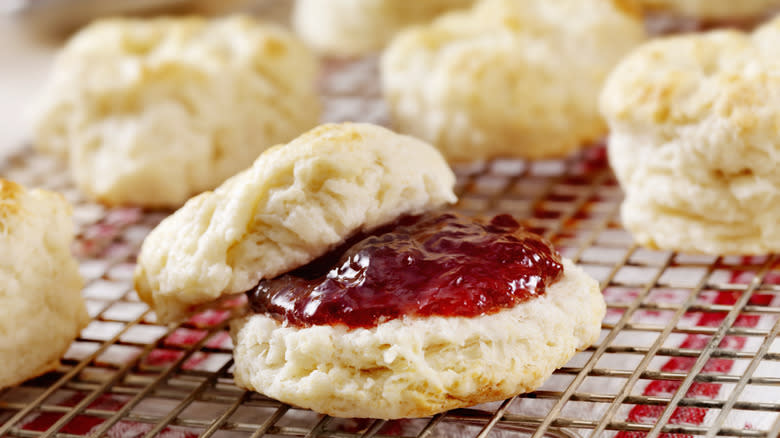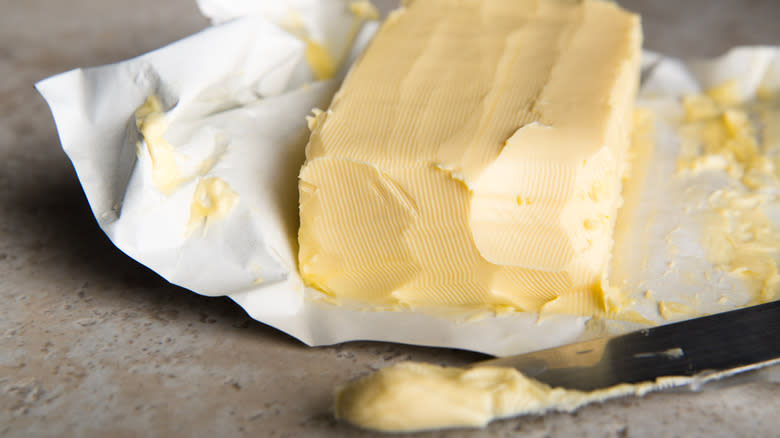Baking With Softened Butter Leads To A More Tender Biscuit

When it comes to crafting biscuits that are the epitome of tenderness and melt-in-your-mouth goodness, it may surprise you that the key ingredient is soft butter. While many biscuit recipes call for very cold butter, taking a different approach and using soft butter can result in biscuits so tender that they practically crumble in your mouth.
The secret behind using soft butter in biscuit recipes lies in its ability to create a finer, more delicate crumb texture. When butter is at a malleable, room temperature consistency, it blends seamlessly with the dry ingredients, forming tiny clusters of fat that melt during baking. This melting fat creates pockets of air within the biscuit, resulting in a tender texture inside.
Traditionally, biscuit recipes call for very cold butter to help them rise. The idea behind this is that when cold butter is cut into the flour mixture, it creates larger, more distinct layers of fat, which, when baked, produce a flaky, layered texture. While this is a valid approach that yields excellent results, it may not always provide the utmost tenderness. Fortunately, you can have the best of both types of butter.
Read more: 12 Popular Grocery Store Butter Brands, Ranked
Using Butter In Both Of Its Forms

To create biscuit dough with soft butter for the ultimate tenderness, start by gathering your ingredients, but more specifically, softened butter. It's essential that your butter is soft but not melted. Next, add the softened butter to the dry ingredients. Using a pastry cutter, two knives, or your fingertips, gently work the butter into the flour mixture until it resembles coarse crumbs. The goal is to create small, butter-coated flour particles. From here, continue with your recipe per usual.
If you want biscuits that are both tender and flakey, you can opt to use cold butter and softened butter. This combination will give you the best of both types of biscuits. Just be sure to use half the amount of butter softened and the other half very cold. You might consider cutting the cold butter into the dough first to avoid overworking the softened butter into the dough.
Remember, soft butter blends seamlessly with the dry ingredients, creating a crumb that practically melts in your mouth. By taking this alternative approach to biscuit-making, you can elevate your baking to new heights of tenderness and flavor, one buttery, tender biscuit at a time.
Read the original article on Tasting Table.

